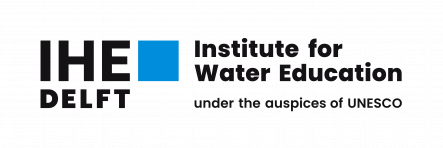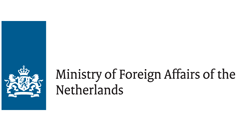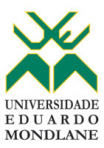Proposed Research
Research for development questions
- What are the pathways of saltwater intrusion to coastal aquifers?
- What are the socio-economic impacts of groundwater salinization, and how can the latter be disaggregated with regard to the local populations (gender, employment, welfare)?
- How do climate change and human activities deteriorate saltwater intrusion in each of the study areas, how do they differ between areas, and what are the underlying uncertainties?
- How can the monitoring of groundwater salinization and related parameters be optimized?
- What are technically and economically feasible mitigation/adaptation measures to salinity impacts in each area and how do they promote (gender) inclusivity?
Expected research results
- Maps of groundwater availability and demand, salinity distribution and reports on salinity origins that provide scientific information for improved water resources management;
- Reports on socio-economic impacts of groundwater salinity and societal vulnerability, needs and willingness towards adaptation and framing within institutional/regulatory frameworks;
- Optimised salinity monitoring networks with participatory monitoring that serves as an early warning system for protecting water supply;
- Calibrated groundwater models that can be used as a decision support tool for groundwater management and evaluation of climate scenarios and mitigation/adaptation measures;
- Assessments of the potential effects of climate change on the studied coastal aquifers, and inherent uncertainties, that will support the design mitigation and adaptation measures;
- Design of cost-effective mitigation/adaptation measures that will improve water safety plans, and the feasibility of which will be analysed with the help of the groundwater flow simulation models, economic assessment tools.
Main research activities and methodologies
Problem diagnosis of salinity and impacts
The project started with a diagnosis of the main problems and identification of the user needs in the three study areas, through stakeholder workshops. The close involvement of the users/stakeholders (formal and informal) throughout the project will be fundamental. The first necessary activity following the workshops is the baseline characterization, analysing existing data and the need to collect new data for a more comprehensive characterization of the problem. In particular, data will be collected for building or improving the conceptual model of the studied aquifers and the problem of saline groundwater occurrence. The existing monitoring network will also be evaluated together with the responsible institutions (WEA, WRPD). From a socio-economic point of view, efforts will be made to characterize and assess the local exposure, dependency, sensitivity and vulnerability of domestic and agricultural water use to/of groundwater salinity. Specifically, we will examine the pattern of current water use in relation to water sources with different exposure to groundwater salinity through household surveys and water supply data of the WU. This will be complimented with primary data from users (i.e. supply through small-scale providers and/or household option). Based on that cost implications and impact of salinity will be estimated.
Monitoring of groundwater salinity
The study of the spatial extent and possible origins of groundwater salinity will include among the following methodologies, where they are found to provide added value: remote sensing, geophysical surveys, representative groundwater sampling for chemistry/isotope analyses and water level/salinity measurements in selected wells and groundwater dependent surface waters. For a selected number of key monitoring wells, continuous monitoring devices of salinity, temperature and water level will be installed. Data produced by these devices will be analysed over the entire duration of the project, to improve the understanding of groundwater and salinization dynamics, and will further be used to calibrate groundwater flow models. The monitoring network will be optimised in terms of cost/benefit/representativity, using a number of (geo)statistical tools. Based on a careful evaluation and discussion with the local partners, particularly WEA and groundwater users/providers (e.g AFORAMO in Mozambique), a participatory monitoring network will be set up, where a number of well owners will receive equipment to measure salinities with their mobile phone and send the data to a project database on a periodic basis. Workshops and training sessions will be organized for this purpose. Based on the newly collected data it will be possible to distinguish between different sources of groundwater salinity, including seawater intrusion, upconing of deeper saline groundwater, and human activities (irrigation, waste water disposal).
Modelling of saltwater intrusion
Based on the hydrogeological data collection, 3D steady-state and transient numerical groundwater flow and salt transport models will be built, which are expected to constitute state-of-the-art representations of the geometry, boundary conditions, hydrodynamic parameters and density differences controlling groundwater flow and salinity in the selected coastal aquifers. Very important for these models, as well as later determination of sustainable yields and analysis of scenarios and mitigation measures, is an accurate calculation of aquifer recharge, to which special attention will be devoted. The models will therefore be constructed based on improved field data collection (including data from the installed monitoring devices) and aquifer recharge estimates, as well as good understanding of groundwater-surface water interactions, which will be disseminated through maps and reports to the WEA and relevant stakeholders. Model calibration and validation will be done in dynamic interaction with data collection and interpretation in coordination with all stakeholders.
Co-construction of cost-effective mitigation/adaptation measures
Based on the previous assessment and projected climate and socio-economic change scenarios, a number of possible mitigation/adaptation measures will be identified and co-constructed with the relevant stakeholders. These will be subsequently assessed on technical and socio-economic feasibility, using the groundwater flow and transport model, and estimating financial costs (including capital investment and operation and maintenance expenditures), mainly based on the engineering/technical characteristics and input requirement of the proposed measures. Cost estimation will rely on available local information sources such as costing and accounting practice, market information, project contracts and bids, and engineering costing information of WU, WEA, and WRPD. The costs of the measures will be mapped with their effectiveness. In particular, with the aid of groundwater salinity modelling, a cost-effectiveness frontier explicitly accounting for the joint or cumulative effect of possible combinations of multiple measures will be derived to guide spatial layout of mitigation and adaptation.
In order to ground the implementation of mitigation/adaptation measures to the local context, the cost-effectiveness study will be complemented with a series of studies on the different social groups that currently depend on groundwater (i.e. households, water providers, aquaculture farmers). These studies will unravel the dependencies and livelihoods based on groundwater use. Based on the information collected, the assessment of measures can be based on a sound understanding of the benefits to and willingness from affected social groups. Additionally, the study will include an assessment of current regulatory frameworks to assess the governing measures of groundwater that would locally facilitate or hamper the implementation of the proposed measures.
Novel and innovative aspects of the research
The proposed research follows an integrated systematic approach for problem diagnosis, characterization, analysis, and solutions. The novel participatory monitoring with mobile phone application will collect large salinity measurements with low costs. Co-construction of mitigating measures with stakeholders is innovative to bridge the scientific research results to socio-economic outcomes. The use of three different sites for the research allows studying the phenomena of groundwater salinization and the implementation of possible mitigation/adaptation measures in different climatic, hydrological and socio-economic settings. This further allows research synergy with important implications for innovation addressing global groundwater salinity issues and the identification of lessons and best practices. This approach provides opportunities to up-scale of project results in other regions and countries.






